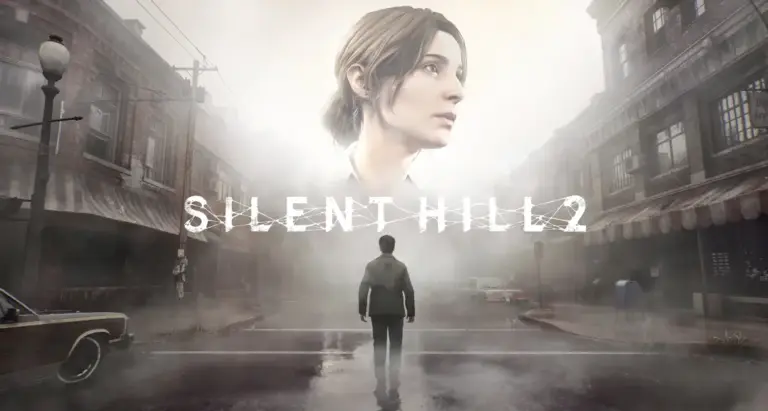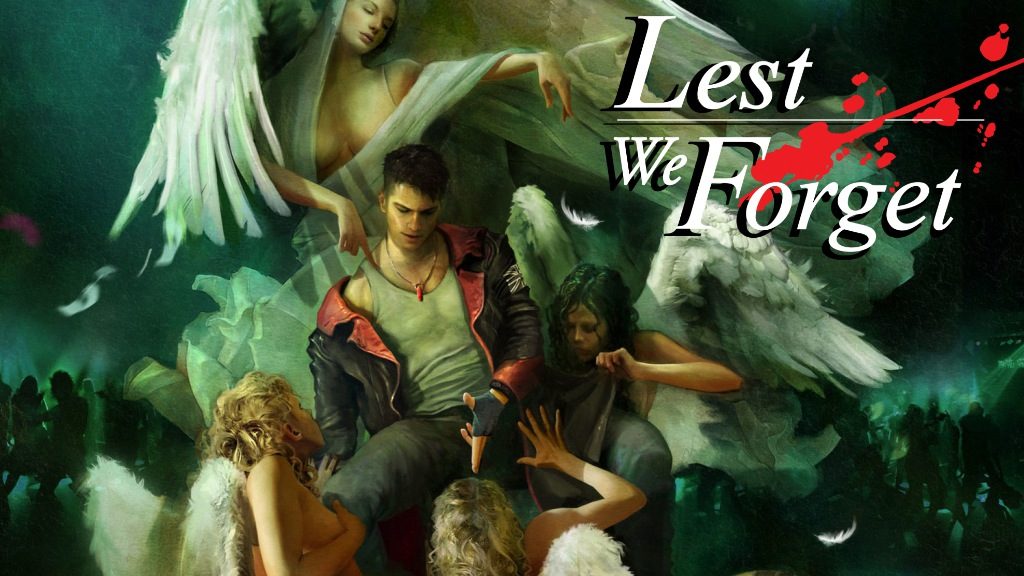
With Devil May Cry V right around the corner, I’ve noticed an uptick in the vitriol for the previous game in the series, DmC: Devil may Cry. The Ninja Theory-developed reboot of the series has long been maligned by a certain set of fans for a variety of reasons, despite being one of the best games to carry the Devil May Cry name.
I’ve heard all the reasons why people hate DmC before and believe me, there are many. Whether its Dante’s haircut, the new game’s tone, or the fact that the protagonist swears, there is no shortage of nitpicks “fans” have found to be angry about. I could go on tirades for each and every minor argument I’ve heard for why DmC didn’t live up to the legacy of previous games, but instead, I’m going to simplify it and just pick the three I hear the most and discuss why they are wrong.
So here we go.

1. Ninja Theory didn’t respect the franchise.
This was one of the first arguments I had hurled at me back in 2013 when the game came out. The rationale I’ve seen stems from a single scene at the beginning of the game where, during a fight with a demon, a white wig falls on Dante’s head in the scuffle. It’s a clear reference to the long-haired demon hunter’s signature locks pre-DmC. He takes a quick look in a nearby mirror and scoffs “Not in a million years.” before tossing the wig aside and getting back to the fight. Cue outrage.
It’s a small, silly moment meant to poke fun at a franchise that has always poked fun at itself. The opening of DmC game is rife with over-the-top moments of physical impossibility that would feel right at home in any other Devil May Cry title. But because Dante cracked wise about a haircut, suddenly fanboys decided that Ninja Theory didn’t respect the franchise enough.
Another point of contention came about when Ninja Theory released a photo of Devil May Cry 4 Dante photoshopped into a scene from Brokeback Mountain. Despite the art team also photoshopping the same photo into a frame from Fight Club, that didn’t stop fans from calling out the developer for insinuating DMC 4‘s Dante was “gay” compared to their new, shiny Dante. It was revealed that the photos were made to help the art team envision Capcom’s request of Dante appearing in a more western setting, but for hardcore fans the damage was done; Ninja Theory hated Devil May Cry.
Maybe the fans complaining about Dante’s hair weren’t paying attention to the fact that at the end of the game it’s made permanently white. Or perhaps they weren’t big enough fans to notice all the references and elements Ninja Theory adapted from previous games; plenty of classic fighting moves like the Stinger and Aerial Raves are completely intact, Mundus and his three-eyes design are both adapted from Devil May Cry 1, and there’s even a fun reference for DMC 4 fans; Nero’s signature pistol The Blue Rose is referenced as an actual blue rose in the game’s early chapters. Dante also retains his love of pizza. I can only assume if DmC 2 got greenlit, we would see him eating a Strawberry Sundae as well.
Capcom specifically stated on many occasions that they wanted DmC to be different from the main series, yet to retain similar elements. So that’s exactly what Ninja Theory did. They didn’t make another game just like the ones before, but they certainly didn’t disrespect the franchise.

2. That’s not MY Dante!
From the game’s very first reveal, people were mad. Dante the anime edge lord had been transformed into Dante the British-punk edge lord. Again, I’ll refer you to the fact that Capcom specifically wanted something different. But also consider for a moment that DmC is meant to be an origin story for the Dante fans know and love, and Dante’s new personality and look begins to make more sense.
DmC Dante isn’t supposed to be DMC 3 and 4 Dante, at least not yet. When DmC begins, Dante has had a rough life and has been forced to survive multiple encounters with demons. He lives in a shitty trailer at the carnival grounds. He’s an isolated depressive who hates a world that’s done nothing good by him. I know I’m summing the story up in the most melodramatic way possible, but bear with me here, I have a point.
DmC Dante isn’t supposed to be the same old Dante, but over the course of the game, he gets closer to becoming him. He gains the white hair, the first forms of his Devil Trigger, learns about his father’s legacy and breaks ties to his brother Vergil. Even the animations used in combat suggest he’s still learning how to swing that sword around – a far cry from the surefooted movements of his DMC 4 counterpart.
Dante has always been a pizza-scarfing, one-liner-toting shithead, but in previous games, he was a lovable one. On some level, I understand people not liking him dropping F-bombs with a new haircut. But at some point, those people aren’t even trying to look at the bigger picture of what Ninja Theory was trying to accomplish with the character. He’s the same Dante he ever was; he just hasn’t learned how to be the Dante we know.
To that end, I have two more points to make.
a. You’re seriously going to argue that DmC made Dante too edgy?

b. Do you really think young Dante wouldn’t fuck? Look at this guy. He definitely fucks. Ninja Theory was just keeping it real.
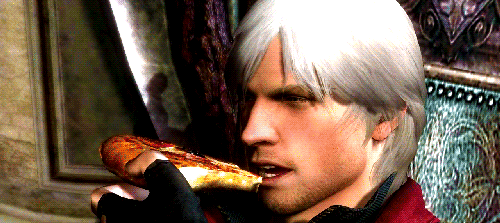
3. The gameplay isn’t as deep as other games.
This is ridiculous. Go back to Devil May Cry 1, 3, and 4, and seriously tell me that the system for locking onto enemies, dodging, and switching weapons and styles is acceptable. Maybe by PS2 standards, but by 2013 it was outdated as hell.
DmC simplified the control schemes of previous games, but in doing so also offered deeper combat and more potential for combos. This is most embodied by the series of what I call “pause moves.” In DmC, Dante can attack twice, wait for a moment, and the third attack they launch will change. If they’re wielding the heavy demonic axe, that third strike will unleash a devastating triple strike. Likewise, the angelic scythe will create a quick flurry of blows, and Dante’s trademark sword will spin in a 360, damaging all enemies in range.
This is incredibly similar to moves from Devil May Cry 3 and 4, but the variety here gives DmC an edge. By having similar moves that afford different options across all three weapons, Dante can easily lead a two-hit combo with one weapon into a third strike with another, all to different effects. A combo starter with Rebellion can lead into an end with the demonic axe, or continue the combo with the angelic scythe.

This is just where the increased combat variety of DmC begins. The game also focuses more on airborne combat, allowing skilled players to stay in the air with a grabbing system similar to Nero’s Devil Bringer in DMC 4. Each weapon also has a unique launching attack, now placed on the same button as previous games’ style moves. With all of these changes offering players plenty of choices in combat, and the ease afforded by Ninja Theory switching the style from D-pad to the more natural-feeling triggers, its hard to deny that DmC isn’t just easier to play, but also much deeper.
Depth isn’t just about accessibility; if anything, having technical barriers to entry prevents players from finding a groove that works for them. Instead of focusing on the more technical, somewhat outdated combat of previous games, Ninja Theory wisely made a polished combat system that retains all of Dante’s classic moves, with new tricks like pulling opponents closer or closing in on them. The result is a game everyone can play and enjoy, with enough depth for fans who’ve been with the series for more than a decade.
–
I’m sure there are nearly unlimited more reasons people have given for not liking the game, these three were the most prevalent I could find. I could look up all the other ones, but listening to such blatant negativity for the sake of negativity is incredibly draining. So I decided to be positive, and look at three things DmC does very well
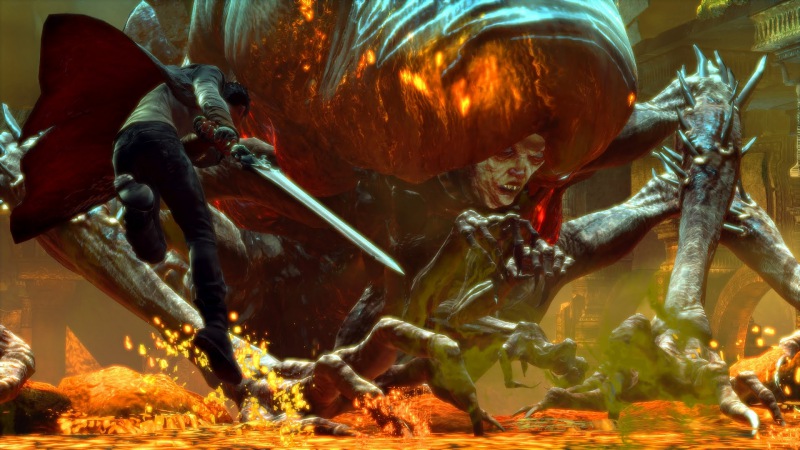
1. The combat is fantastic
I’ve already explained how DmC has more accessible and deeper combat than previous games, but there’s more to DmC‘s combat than combos and controls. In fact, one of DmC: Devil may Cry‘s most underrated aspects is arguably its greatest asset: encounter design.
DmC employs its angelic and demonic weapons in coordination with color-coded enemies; demonic weapons deal more damage and stagger red enemies, while angelic weapons have the same effect on blue enemies. Mixing the light-but-fast crowd control of the angelic weapons with the heavy, focused swings of the demonic weapons already affords plenty of tactical options to players, but by forcing players to mix those up to survive, Ninja Theory creates a character-action ballet.
Ninja Theory made an additional tweak to this system in 2015’s DmC: Definitive Edition that created a better flow and more risk-reward options for the player. Dante doesn’t have to just attack blue enemies with blue weapons and vice versa, but those are the only weapons that will interrupt those enemies attacks. This gives players the option to go in on colored-coded enemies with weapons that won’t stagger them or stop their attacks but might deal more damage.
Of course, great encounter design would be nothing without enemy variety, and DmC has that in spades. Good encounter design forces players to shift priorities on the fly by forcing them to adapt. For example, DmC: Devil may Cry‘s shield-bearing nymphs can protect any enemy from damage by leaving themselves open to attack. If Dante wants to focus on them, he needs to ignore the other enemies, but if players leave the nymphs for last, they have to deal with constantly shielded foes in the meantime.
For veteran Devil May Cry players, the variety and nuance of DmC: Devil may Cry‘s combat and enemy design might not become apparent on the game’s default difficulties. For those feeling let down, I recommend playing through the game on Dante Must Die, unlockable after beating the Son of Sparda difficulty. The game’s hardest setting, Dante Must Die remixes all enemy waves and adds an additional “enrage” mechanic where enemies don’t stagger if they’re particularly riled. It’s a truly challenging mode that shows just how much Ninja Theory knew what they were doing. For an extra challenge, turn on Turbo Mode and Must Style Mode. If you had doubts about the quality of DmC’s gameplay before, these optional tweaks should make you a believer.

2. The game’s style is interesting and unique
When Capcom went to Ninja Theory to make DmC: Devil may Cry, they were specifically asked to make massive changes to the tone and style of previous games. Like everything else, they wanted DmC‘s style to stand out in the games’ market of 2013, in a way continuing the style of Devil May Cry 4 never could.
I’m going to be real for a minute; the original DMC games, while visually wonderful, were never aesthetically original. Likely due to their origins in the Resident Evil series, Dante’s adventures on the PS2 were steeped in the same anime-gothic style that was found in games like Shadow Hearts, Clock Tower 3, and Resident Evil 0. They were, and still are, beautiful games. But not unique.
DmC, on the other hand, is one of the most visually unique games you can find from its generation. Casting the alternate realm of Limbo in oversaturated hues of orange and blue, the demon-corrupted world Dante explores manages to retain the foreboding gothic horror atmosphere of its roots but injects a distinctly urban flavor.
Everything about the game’s style has an immaculate sense of cohesion to it, despite being pulled from so many disparate elements. Surreal gothic churches bend and contort to kill Dante while Euro-goth metal blares. Spindly demons lie in wait against dilapidated street murals depicting grand battles between the forces of Heaven and Hell. Of all the versions of Hell explored in games, Limbo ranks near the top on originality alone.

3. The main character actually has an arc, unlike previous games.
I’m not going to say that the story of DmC or any Devil May Cry game for that matter is objectively good. While the games all feature memorable characters and over-the-top antics, much of their narrative value is in the eye of the beholder. What I will say is that unlike previous games in the series, DmC: Devil may Cry had something to focus on.
Ostensibly, DmC: Devil may Cry is about a young Dante’s journey from a wisecracking street punk to the wisecracking demon hunter. To make that transformation, he discovers the home he never knew and his heritage as a Nephilim, thanks to his long-lost twin brother Vergil. Together they team up to depose the demon king Mundus, who killed their parents, and Dante finds something worth fighting for. Lives get lost, sacrifices get made, and towards the end of the game, Vergil makes a heel turn, saying he and Dante should rule in Mundus’ place. Cue final boss, brothers part ways, and Dante is left again with no family and nothing else to fight for.
It may sound like he ends up in the same place he began, but that’s not the case. Along the way, Dante learns to trust Kat, a witch who works with Vergil. The two open up to each other and she becomes his link to a piece of humanity he thought he had lost during his upbringing where he killed to survive.
Of course, this story isn’t for everyone; no story should be. In trying to strike a balance between nuanced melodrama and the anime shenanigans fans came to love the series for, Ninja Theory understandably hit some growing pains. But the story does at least try to say something and do something with its characters beyond caricature. By the end of the game, Dante is a different person than the dipshit he starts as.
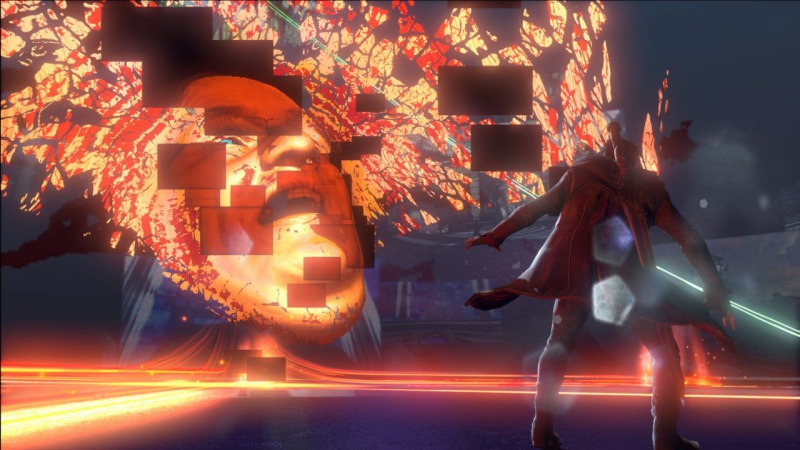
In Devil May Cry, Dante does have an emotional link to Trish, who resembles his mother. But their characterization is so thin there’s nothing to get attached to. Devil May Cry 3 has better characterization between Vergil and Dante, but its a one-note affair; one brother is good, one is bad. Devil May Cry 4‘s Nero has something to fight for in Kyrie, but it is a barebones romance that serves to just move the plot forward, and Dante is just along for the ride.
There are plenty of arguments why DmC‘s story isn’t great. Awkward writing and line delivery can be pretty distracting in certain scenes. The “Sniper” scene with Vergil is a disturbing turn that, while revealing a darker side to the character, is gratuitous and unnecessary. Mundus is a fairly unremarkable villain, and Kat plays into several damsel tropes. There’s a lot to unpack.
The problem is that so many of these small points get brought up again and again at the expense of the larger picture; DmC: Devil may Cry is the most focused, nuanced, and character-driven story in the series, even if that’s not saying much. Ninja Theory tried something new, and even though they didn’t hit it out of the park, there’s plenty to like about DmC‘s narrative.
–
DmC: Devil may Cry is not a perfect game. It has major issues with its story and writing, awkward misogyny, and many of the boss fights, while artistically interesting, can be boiled down to a series of glowing weak points. But looking past those flaws, DmC: Devil may Cry is a fantastic reinvention of the series, retaining everything that made the originals great while taking influence from modern action titles like Bayonetta and the Arkham series.
If you played DmC: Devil may Cry when it first came out or even ignored the game altogether because of the negative reception from select fans, this is me telling you to give it another go. If you were one of those fans who spat venom through gritted teeth against this game, despite buying and playing it multiple times, I challenge you to think about what I wrote here and give it another try with these points in mind.
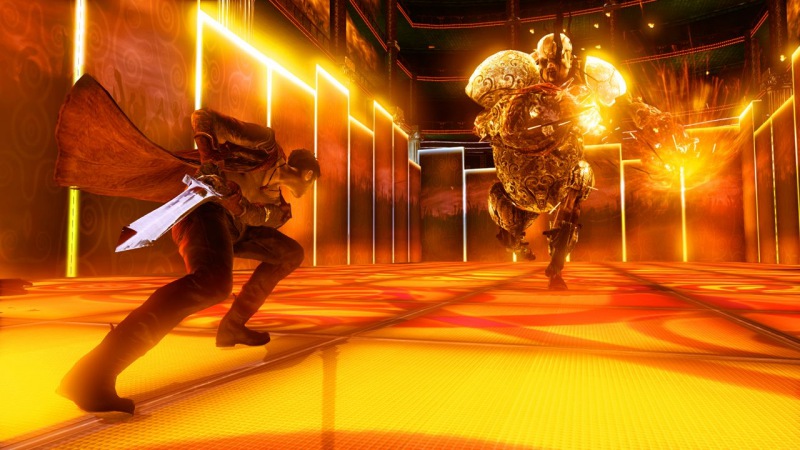
2015’s re-release of DmC: Devil may Cry on PS4 and Xbox One made several fan-requested fixes, including bringing the game to 60 fps, adding a lock-on system, and the aforementioned Turbo and Must Style modes. Dante’s costumes from DMC 1 and DMC 3 are also included, making it the ideal way to play the game for old-school fans of the series.
Devil May Cry V is on the horizon; the game you wanted in 2013 is almost here. In the meantime, we shouldn’t be mad that DmC wasn’t what we expected from the franchise, but instead, we should try to enjoy it for everything it does right. DmC: Devil may Cry is now just a spinoff of a classic franchise; a unique, Western innovation on characters and gameplay fans have come to love since 2001. It deserves better than being forgotten.
In the years since DmC: Devil may Cry, Ninja Theory released the wonderful Hellblade: Senua’s Sacrifice, which proved their narrative chops once and for all. Previous games from the studio like Enslaved and Heavenly Sword have ascended to cult classic status, remembered for their ambition and successes more than their flaws; it’s time for DmC to join them. Life is too short to spend five years being angry at a talented team of artists and designers who poured their heart and soul into reimagining a classic franchise. If you didn’t like it and don’t think anything I’ve said here is worth listening to, then move on.
If you feel like giving DmC another chance, now is the time.

